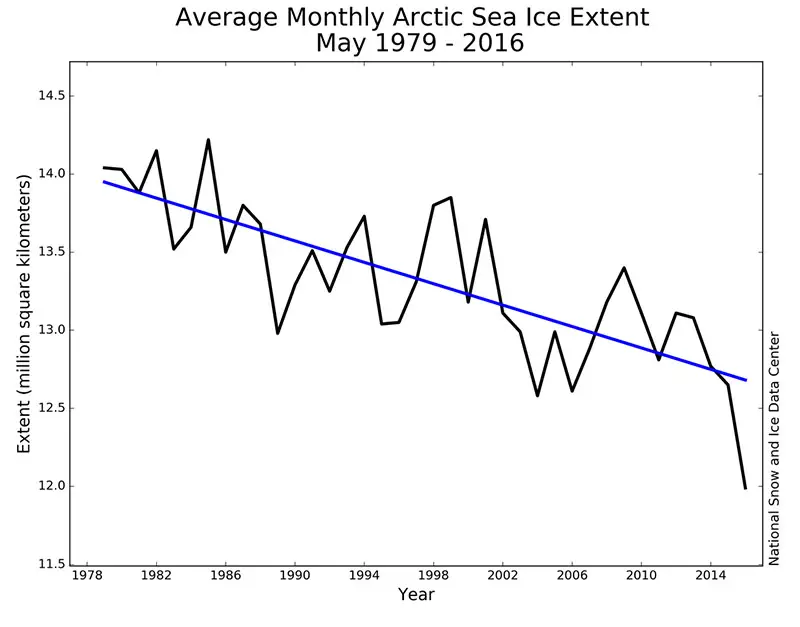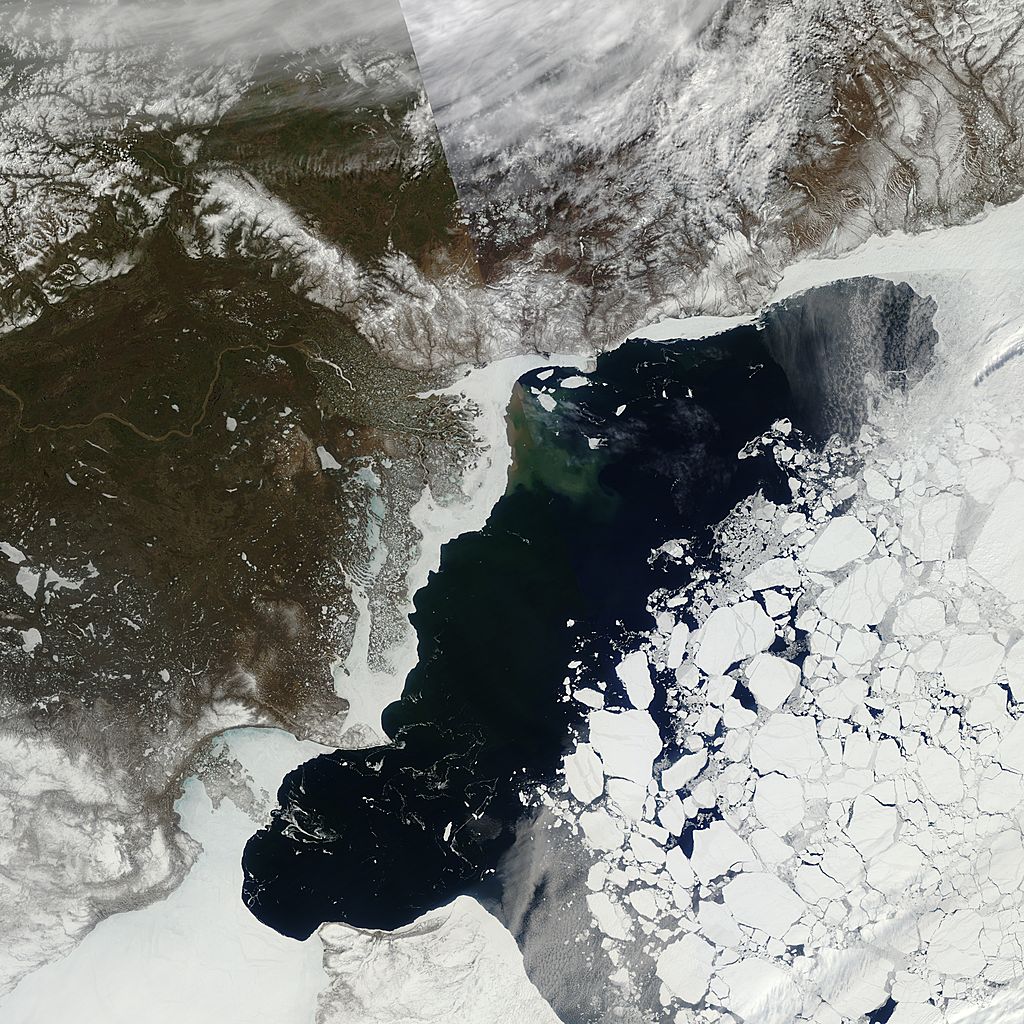
8th June 2016 Arctic sea ice hits record low for May The National Snow and Ice Data Centre reports that Arctic sea ice reached its lowest extent on record for May by an unusually wide margin.
The Arctic sea ice extent for last month was 580,000 sq km (224,000 sq mi) below the previous record low for the month set in 2004, according to the latest analysis of satellite data by the National Snow and Ice Data Centre (NSIDC). "We've never seen anything like this before," said Professor Mark Serreze, director of NSIDC. "It's way below the previous record – very far below it – and we're something like almost a month ahead of where we were in 2012." To put things in perspective: sea ice cover broke the previous record low for May by an area larger than California. When compared to the average May between 1981 and 2010, the difference is even starker: equivalent to more than three Californias. Melting sea ice does not contribute to rising sea levels, because the ice is floating. However, it has a strong effect on the Earth's albedo – a measure of the planet's reflectivity. When ice disappears, it creates darker areas of open water that absorb sunlight (and therefore heat) more easily. The Arctic is now warming twice as fast as the rest of the world. Last month's record of 12 million sq km (4.63 million sq miles), follows previous record lows this year in January, February, and April. The NSIDC report explains that winds from northern Europe and Alaska have been pushing higher than average temperatures into the Arctic Ocean, producing hot spots across the region. Air temperatures in May were 2.8°C (5°F) above average, with some pockets of anomalous warmth even higher than that. "The impacts on ocean and land systems are transformational," said Prof. Chris Rapley at University College London. "The situation is changing the circulation patterns and behaviours of the atmosphere and oceans."
In addition to a reduced surface area, ice thickness has also been declining – especially in the Beaufort Sea (up to 40 cm below the 2011-2016 average) and the Barents and Kara seas (10 to 30 cm thinner). A self-reinforcing feedback cycle is being produced, as the NSIDC's report explains: "When this thinner ice melts, dark open water areas may grow rapidly as energy is absorbed, which in turn melts more ice and can accelerate multiyear ice decay." The NASA image above, taken on 21st May, shows a highly fragmented field of ice in the Beaufort Sea above Canada, and a large gap of open water separating the ice from the coast. It remains to be seen whether 2016 as a whole will beat the previous annual record of 2012, which will depend on the summer weather. "All we can say is that we are on a very bad footing," says Professor Serreze. "However, this is also part and parcel of a longer trend ... we've always known that the Arctic would be the place most sensitive to climate change, and that's what we're seeing." ---
Comments »
|








